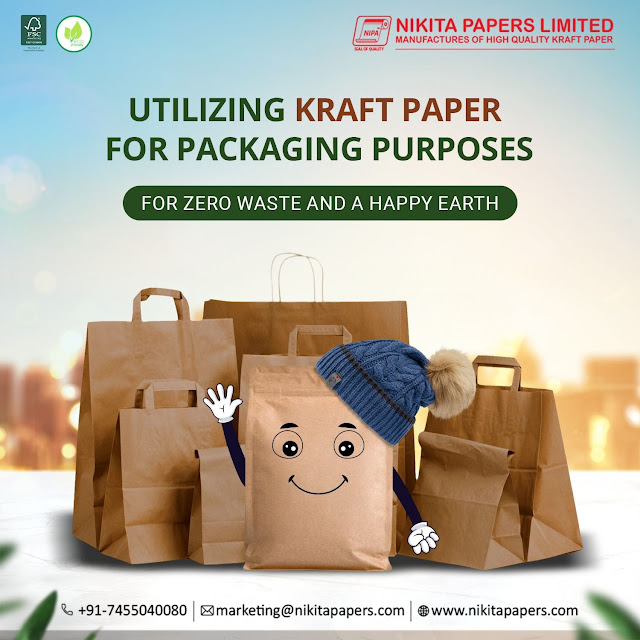70 GSM Paper: A Comprehensive Guide to Choosing the Right Weight for Your Needs
The world of paper may be a surprisingly complex place, with weights, textures, and finishes multiplying like rabbits in a magician's hat. Today, we'll look at a specific player in this arena: 70 GSM paper. But don't dismiss its potential! This seemingly "lightweight" solution delivers a powerful punch in terms of adaptability and environmental friendliness, making it a popular choice for a variety of printing and packing applications. Nikita Papers is one of the leading 70 GSM Kraft paper manufacturers whose paper is also biodegradable in nature which ensures that once disposed of, breaks down naturally, reducing the environmental footprint.
When it comes to selecting the correct
paper for your printing or packaging needs, weight is critical in deciding the
thickness, sturdiness, and overall quality of the paper.
Understanding 70 GSM:
GSM is an abbreviation for "grammes
per square metre," a paper weight measurement. 70 GSM is thinner than
printer paper (80 GSM) but thicker than newsprint (45-55 GSM). This weight has
distinct advantages, making it excellent for:
1. High-volume printing: 70 GSM is
a good choice for flyers, brochures, and newsletters because it is both
cost-effective and durable. You save a lot of paper while not sacrificing print
quality.
2. Eco-friendly options: Because
it is lighter in weight, less pulp is utilised, resulting in a lower
environmental footprint. Nikita Papers being the premium 70 Gsm paper manufacturers provide FSC-certified 70 GSM paper obtained from responsibly
managed forests, making it an ethical printing option.
3. Crafting finesse: Thinner paper
is inherently more bendable, making it ideal for creative applications such as
origami, invitations, and greeting cards. The gently rough surface adds
complexity and refinement to your designs.
4. Double-sided printing: The
opacity of 70 GSM is frequently suitable for double-sided printing, reducing
paper waste and effectively displaying your content.
Selecting the best 70 GSM for you:
Not all 70 GSM papers are the same.
Material and finish variations can have a significant impact on printing
quality and final application. Consider the following:
1. Material: Virgin wood pulp
provides outstanding printing quality and brightness, while recycled fibres are
environmentally friendly. Some speciality options, such as kraft paper
(produced from unbleached wood pulp), have a distinct rustic look.
2. Finish: Uncoated paper has a
natural, textured feel that is great for invitations or craft projects. Coated
paper, which comes in matte and glossy textures, improves image quality and is
ideal for flyers and brochures.
3. Ink compatibility: Different
inks perform better on different types of paper. Water-based inks are
appropriate for most 70 GSM papers, however, laser printing requires
toner-adhesive papers.
70 GSM paper may be the printing industry's
unsung hero, but its versatility and eco-friendliness make it a compelling
choice. You may access a world of printing opportunities while minimising
environmental effects by understanding its strengths and selecting the best type
for your needs. So, the next time you grab a paper, keep the humble 70 GSM in
mind - it could be the ideal weight for your next project. Opting for 70 GSM
from eco-friendly paper manufacturers ensures that your choices align
with responsible practices.

.jpg)

Comments
Post a Comment